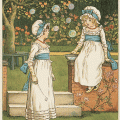Shawnie McRaney: The courage of change
Shawnie McRaney struggled to understand her gender identity for years before she finally identified as transgender. She shares her personal journey with courage and candor and explains how the support of her colleagues and the Smithsonian’s commitment to diversity and acceptance helped her make the decision to transition.
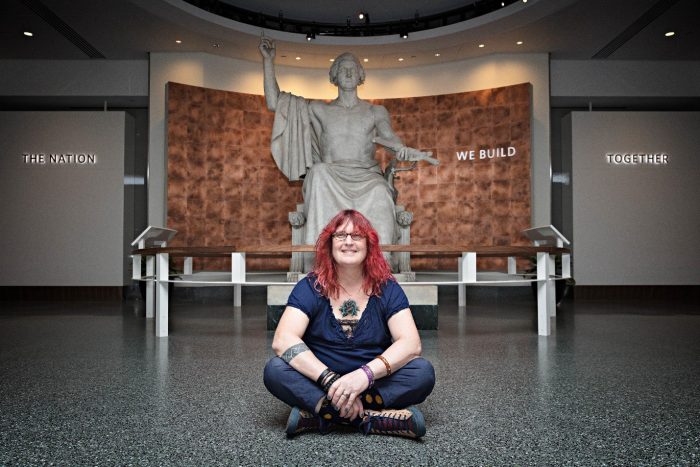
Shawnie McRaney sits before the Horation Greenough statue of George Washington at the entrance to the 2 West Gallery at the National Museum of American History. (Photo by Jaclyn Nash)
The Smithsonian Institution has undergone many transitions since its conception in 1846, but has always been a national leader in prioritizing diversity and inclusion. Welcoming millions of visitors each year and boasting thousands of employees and volunteers, the Institution has flourished with the help of individuals from every walk of life.
There are times, though, when one’s identity is not so clear. Without strong protections in place for transgender individuals throughout American history, this community has managed to remain largely misunderstood in the public sphere. With 2.77 percent of D.C. residents identifying as transgender (according to a 2016 Williams Institute UCLA School of Law publication), however, the conversation surrounding these members of the LGBTQ+ community is changing, and the Smithsonian is right in the middle of it.
Shawnie McRaney first became a part of the Smithsonian family in 1986 after graduating from Virginia Commonwealth University with a degree in art education and painting. An exhibits specialist at the National Museum of African Art at its previous location on Capitol Hill, she spent her time setting up and maintaining works of art and helped to move the museum to its current location on the Mall. Five days a week, 22-year-old Shawnie worked long and hard at her Smithsonian “day job” before heading home to explore her passion for painting, with the goal of becoming an esteemed artist herself. Then, though, prior to her transition, she was known as Shawn.
“When I was really young, I would tell the adults that when I grew up I was going to be a football player, an astronaut or a race car driver. When asked why, my reply was always, ‘because I don’t want a boring job,’” McRaney said.
After reaching high school and realizing that those dreams weren’t in her future, McRaney turned to art.
McRaney’s talent was recognized early on at the African Art Museum, and within a year, she was offered a full-time position with Exhibits, where she excelled, eventually transferring to the American Art Museum’s Renwick Gallery in 1991. As a creative and educational Institution that values diversity of thought, background and experience, the Smithsonian has served as a place for employees, volunteers, and visitors from all cultures to explore their identities and learn from one another. The Smithsonian was the first federal agency to recognize a gay, lesbian, trans, and bisexual employee affinity group (GLOBE). For McRaney, this meant the Smithsonian was safe and comfortable.
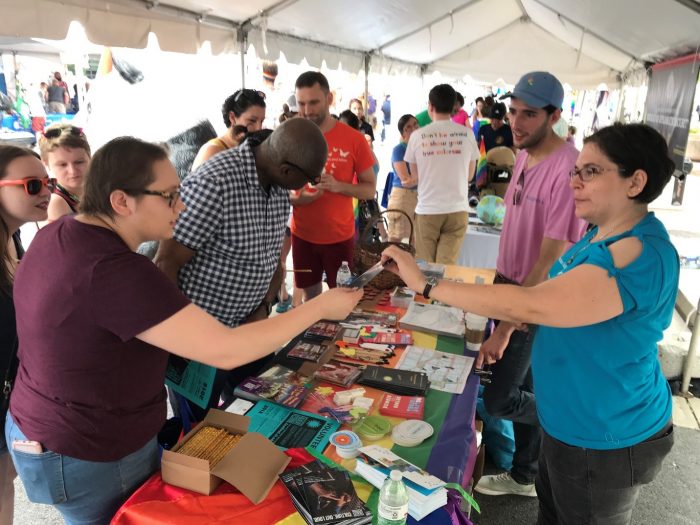
Volunteers from Smithsonian GLOBE connected with visitors to the SI booth at the Sunday afternoon Pride festival, sharing information about Smithsonian exhibits, events, and involvement opportunities.
The world outside the walls of the Institution, however, was less accepting of those whose gender identities differed from their birth certificates. In 1979, Johns Hopkins Hospital ceased the performance of gender reassignment surgeries, stating that transgender individuals simply had a mental disorder. In 1987, the American Psychiatric Association formally classified transgender people as having “gender identity disorder” in that year’s revision of The Diagnostic and Statistical Manual of Mental Disorders. At the height of the HIV/AIDs epidemic of the 1980s when several communities of young gay men were stricken with Kaposi’s sarcoma and pneumocystis pneumonia, the transgender community struggled to find acceptance, respected neither socially nor by the scientific community.
“In the late ‘80s, I didn’t hear the term ‘LGBT’ let alone the ‘Q,’” McRaney recalled. “I heard ‘gay.’ ‘Faggot.’ ‘AIDS.’ ‘Dyke.’”
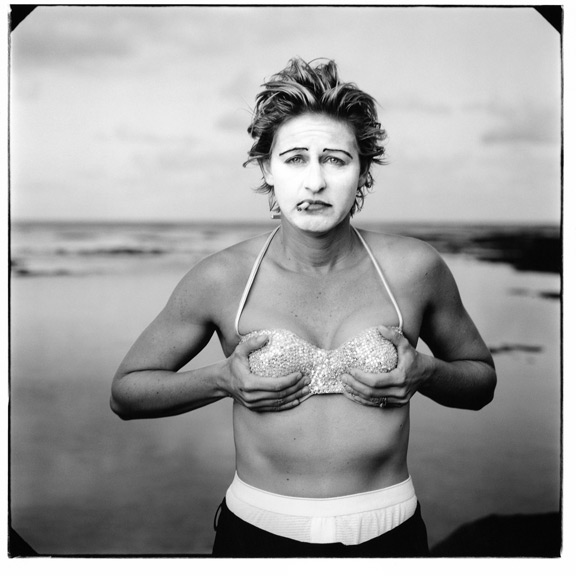
Ellen DeGeneres, Kauai, Hawaii by Annie Leibovitz. Gelatin silver print, 1997. © Annie Leibovitz, 2010. This image was among those on display in the exhibition “Hide/Seek: Difference and Desire in American Portraiture” at the National Portrait Gallery in 2010.
McRaney absorbed the bigotry of the times and fought the idea that her gender identity might be different from her assigned sex.
“All my life I had struggled with gender identity and sexuality. Growing up in the ‘60s through the ‘80s, there was nothing to help me understand my feelings. I was a ‘freak.’ A ‘pervert.’ The only transgender women I had been exposed to were pornographic actors, treated as exotic sexual objects. That’s how we were viewed [by the general public].
“There was no serious dialogue of identity and the right to decide one’s own destiny. [For me,] being attracted to girls, it wasn’t an intuitive move to put on a dress and ask a girl out on a date. My gender identity remained murky and in the shadows.”
For two years, McRaney trekked through Washington, past countless poor and homeless people, to work at the museum. Every day, on the way home, she would stop at a nearly-abandoned building at 9th and F St. NW, where she would spend hours turning her emotions into art. After scavenging for materials, McRaney came up with the idea of using windows in place of canvas. Making piece after piece of work, she soon had used up 3 floors worth of windows from the building.
“I thought things were going great until one day I arrived at the studio only to be confronted by some old guy I hadn’t never seen before. He yelled, ‘YOU! You’re the one that’s been stealing all my windows!’ He kicked me out on the spot and I had to leave everything behind. Getting kicked out had become a theme for me after college. I kept getting kicked out of homes and relationships. I bounced around. Working at the Smithsonian was the only stable aspect of my life.”
However, after a decade at the Smithsonian, McRaney decided to try something new, leaving the network of support she had found working at the Institution and jumping into a new life.
“I carried that new beginning farther by cutting ties with SI in 1997. I needed to get away. Run away. Maybe I wasn’t ready to fully accept my gender identity but I was ready to try my own hand at supporting myself as an artist fully independently.”

Mixed-media “Vulva” ca. 1996. by Shawnie McRaney
For the next 12 years, McRaney traveled around Maryland, painting churches, restaurants, grocery stores, homes and public murals, using art as a way to explore her identity.
“It was in these years that my individuality took shape, even as the one aspect of my [gender] identity lagged behind. [I was] provided the freedom to succeed and fail on my own terms. It was in those years that I found help and gradually the world around me changed. Gradually the language changed. Culture changed.”
In the first decade of the new century, the transgender community began to gain some protections across the nation. Rhode Island became the second state to include transgender people in nondiscrimination law. George W. Bush became the first president to officially welcome a transgender visitor to the White House. Silverton, Oregon elected the first transgender mayor in America, and President Obama selected the first openly trans federal appointees. The APA publicly changed its stance to recognize the “efficacy, benefit and medical necessity of gender transition treatments” for transgender people. In 2017, Johns Hopkins would resume conducting gender transition procedures.
“Society was changing. I could sense it,” McRaney said. “I bought a house, got married. I was cranking along with my ups and downs of life. I felt free. But I realized that I couldn’t shake my true gender. I was faced yet again with the fear that no one would hire me if I transitioned. How could I fit in? I would be too weird, too much of a freak. I was overwhelmed with more self-doubt and internal dread.”
A decade after leaving the Smithsonian, McRaney was forced to confront this fear when the new life that she had built for herself fell apart.
“In 2008 at the height of my professional success, the world made my decisions for me yet again, and the economy collapsed. In one week I lost almost $80,000 of anticipated work between mid-October and the end of December. All my signed contracts meant nothing. People wanted their deposits back. I was dead in the water. After three months of unemployment, I received a call one night from the husband of a former SI colleague who wanted my help on a contract he had won. He told me about the System of Award Management, and I registered as a contractor. By 2014, I had been offered a 13-month term as a contractor at the Freer-Sackler.
“At the same time, I had finally built up the courage to transition. Go figure.”
With that, Shawnie McRaney officially introduced herself to the world. She broke the news to her supervisor, as well as staff in Office of Equal Employment and inority Affairs, and was caught off guard by how supportive everyone was.
“The Smithsonian does a wonderful job of allowing for personal differences and then mediating all sides when conflicts arise,” McRaney said. “I have never taken that kind of support for granted.”
The same year Shawnie began her physical transition, the Smithsonian, though it had always been quietly tolerant of the transgender community, underwent a transition of its own and began to become more openly supportive.
By 2014, the National Museum of American History had expanded its LGBT collection, accepting and displaying the original transgender identity flag designed by major transgender rights activist Monica Helms and a tennis racquet used by Renee Richards, who famously won a New York Supreme Court case against the United States Tennis Association, solidifying that trans players would be permitted to compete as their reassigned sex. That same year, in a huge step forward for members of this community, President Obama signed an executive order banning federal employers from discriminating against LGBTQ+ employees and applicants.
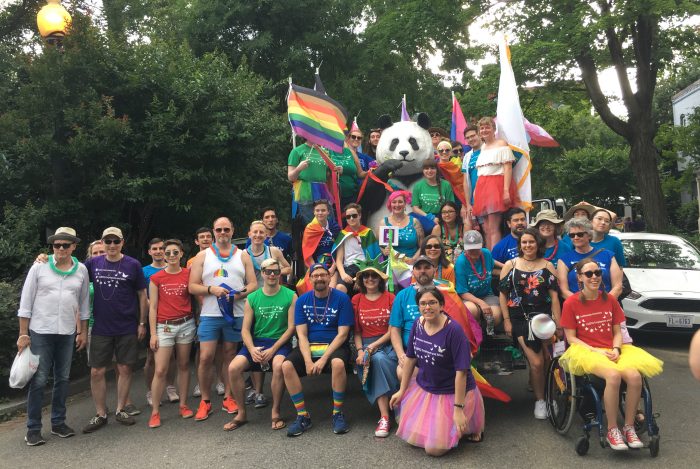
Smithsonian participants in the 2018 Capitol Pride parade. (Photo by Annalisa Meyer, June 9, 2018)
“When I began transitioning, I was afraid, convinced that I would be rejected by most. I sought out help at work and found GLOBE,” McRaney said. “At the time, to my knowledge, there were no other openly transgender employees. I was afraid. Afraid of humiliation, of being abandoned by family and friends, of not being able to face my co-workers, and so much more. I was ashamed of that fear but I couldn’t shake it.”
Despite the support of the Institution, transitioning came with new challenges. The week Shawnie began female hormone replacement therapy, Vanity Fair came out with the cover story on Caitlyn Jenner’s transition. The conversation surrounding the transgender community was suddenly dominated by Kardashian family drama and false statements and assumptions about the transgender experience.
“I heard the jokes. The discussions with bad information.” McRaney said. “I listened in silence thinking I had a long way to go, but confident I could be helpful to others, transgender and cisgender alike.”
In the four years since the start of her physical transition, Shawnie has done just that. With a new job at the National Museum of American History, she has shared a message of kindness and acceptance while educating those who otherwise may have never known what it really means to be transgender.
“I have been challenged every day to assess myself and adapt. I have been able to share my story of transitioning with so many people who would have never known the truth otherwise,” McRaney said. “When I began working at NMAH 18 months ago, I was scared. It’s the largest museum I’ve ever been a part of, but that largeness turned out to be exactly what I needed at exactly the right time.
“I have been exposed to and taught by so many people. The diversity of people here at the Smithsonian, in race, age, gender identity, religion, and so much more, helped to bring me out of my own worries. It’s the people that have changed. People have changed institutions. Institutions reflect the change in people. We all are unique, but I’ve learned that the more we learn of each other, the more we recognize ourselves in others. I am so happy to be back in the fold of the Smithsonian family.
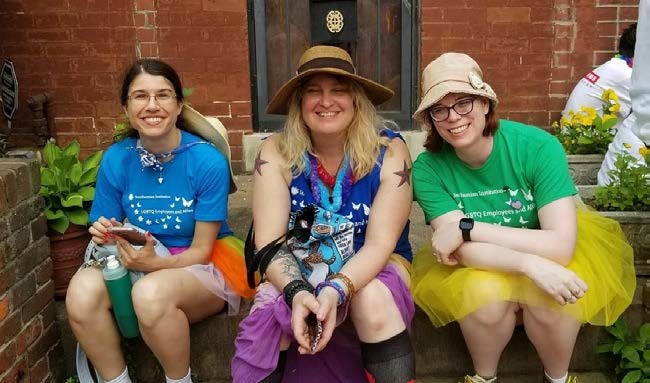
Shawnie McRaney (center) with friends Sara Alexander (left) and Jennifer Eller. (Photo courtesy Shawnie McRaney)
It turned out that being thrown into the deep end of the pool was the best thing for me at that time in life. The situation forced me to finally take hold of myself and I realized that all of these people represented opportunity for me to share. Not hide.”
Reflecting on over 30 years of history with the Smithsonian, Shawnie recognized that the Institution is more than a big brown castle on the national mall and some museums; it is a living establishment, driven and inspired by people.
“What the Smithsonian provides is a clear and unwavering commitment to diversity. Because of the commitment to total inclusion and respect at the Smithsonian, I learned that [while] there is still progress to be made, but we truly exist for people of all backgrounds. We all want the same respect and equal opportunity. Realizing this, I changed my personal focus from ‘me’ to ‘us.’
The commitment to One Smithsonian extends far beyond an effort to digitize exhibitions. It truly is a reflection of the Institution’s identity – a united and diverse place of education and acceptance.
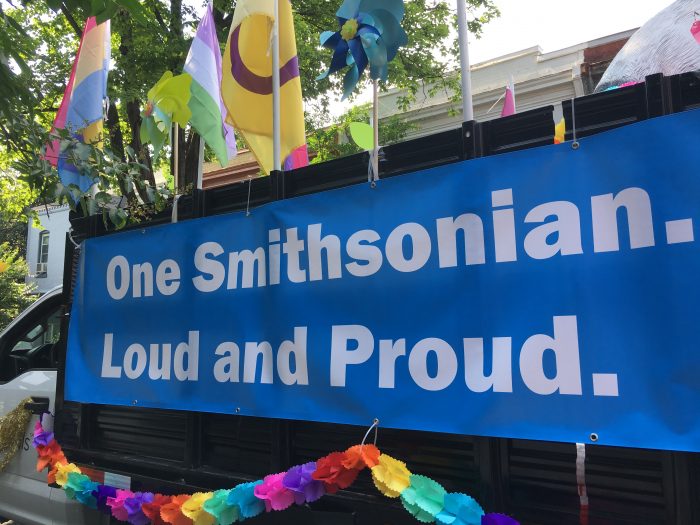
(Photo by Annalisa Meyer, Jun 8, 2018)
A DC-area native, Bonnie Schipper is a senior at Columbia University and an intern in the Office of Equal Employment and Minority Affairs. In addition to her work with the Smithsonian, she acts as a mentor to underprivileged youth in Harlem and serves as an advisor to the Eric Holder Initiative for Civil and Political Rights. She is passionate about promoting equality and diversity and plans to enroll in law school next fall.
Posted: 23 October 2018
-
Categories:
Art and Design , Education, Access & Outreach , Feature Stories , History and Culture

